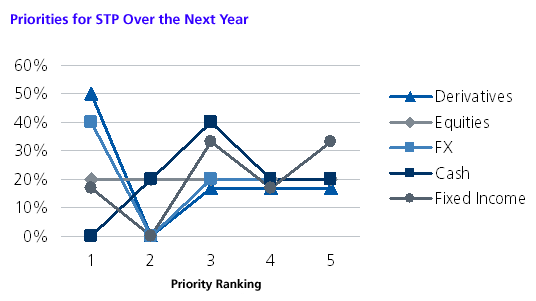Post-Trade Processing in Japan: Back and Middle Office STP at Brokerages, Banks, and Asset Managers
Abstract
Post-Trade Processing in Japan: Back and Middle Office STP at Brokerages, Banks, and Asset Managers
Middle and back office costs in Japan remain high, and firms are missing opportunities to increase efficiencies through greater automation, according to a Celent survey of major Japanese financial institutions.
The Japanese capital markets are in the midst of change. Growth in derivatives and other new products, increased cross-border trading, and the adoption of advanced execution technologies are putting pressure on financial firms to improve operations in the middle and back offices. In a new report, Post-Trade Processing in Japan: Back and Middle Office STP at Brokerages, Banks, and Asset Managers, Celent explains that while transaction flow between systems has been largely STP-enabled, little progress has been made in automating workflow for exceptions handling or corporate actions. Fragmented systems and the lack of cross-asset rationalization are other barriers to STP and limit the potential IT cost savings. Of the three financial sectors surveyed, asset managers in Japan are placing the most emphasis on improving levels of STP, while banks are placing the least emphasis on this area.

"STP is especially lacking in over-the-counter derivatives," says Neil Katkov, senior vice president of Celent’s Asia Research group and author of the report. "OTC derivatives have seen increasing volumes in Japan, including among traditional buy side investors such as pension funds, challenging firms to develop methods for processing them efficiently."
This report is based on a survey of leading Japanese banks, brokerages, and asset managers conducted by Celent in conjunction with SmartStream Technologies. The report examines the state of straight-through processing in Japan across asset classes, including derivatives, equities, foreign exchange, cash, and fixed income. The analysis presents common barriers to STP by asset class and by stage in the post-trade cycle, from notice of execution to clearing, settlement, and payment. Celent also identifies the priority areas for STP projects at Japanese firms as well as overall budget levels directed towards STP.
This 44-page report contains 34 figures and 11 tables. A table of contents is available online.
For more information from SmartStream, please click here.
Members of Celent's Capital Markets research service can download the report electronically by clicking on the icon to the left. Non-members should contact info@celent.com for more information.

